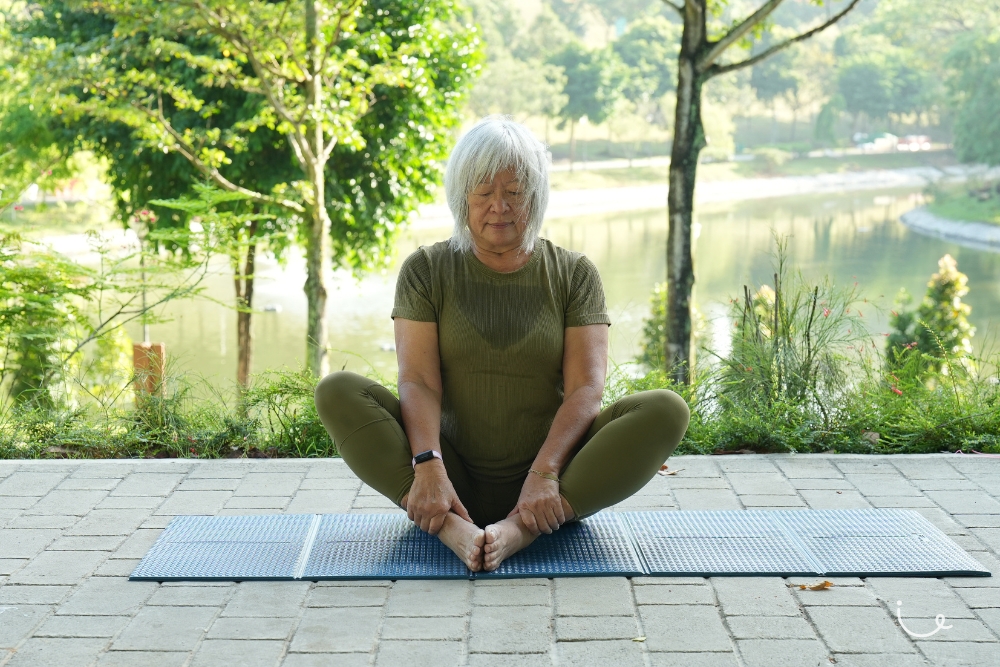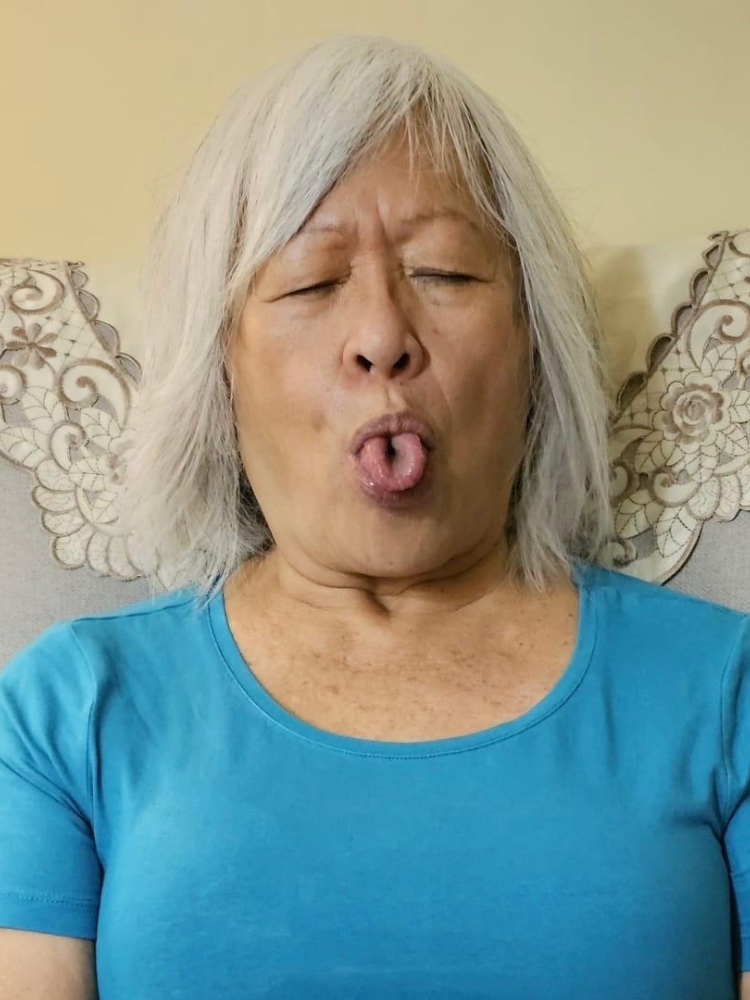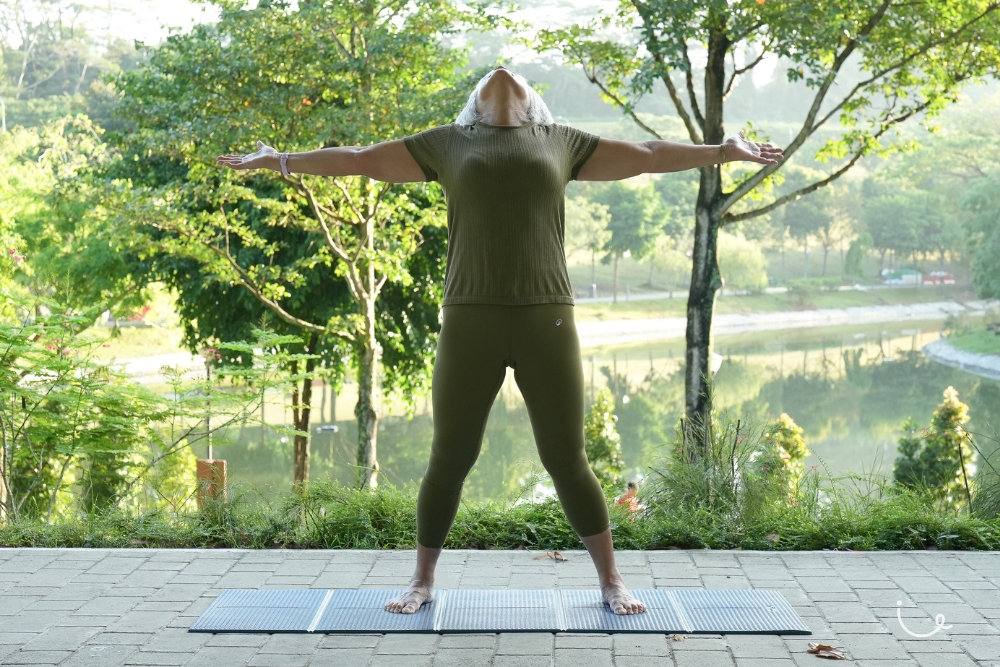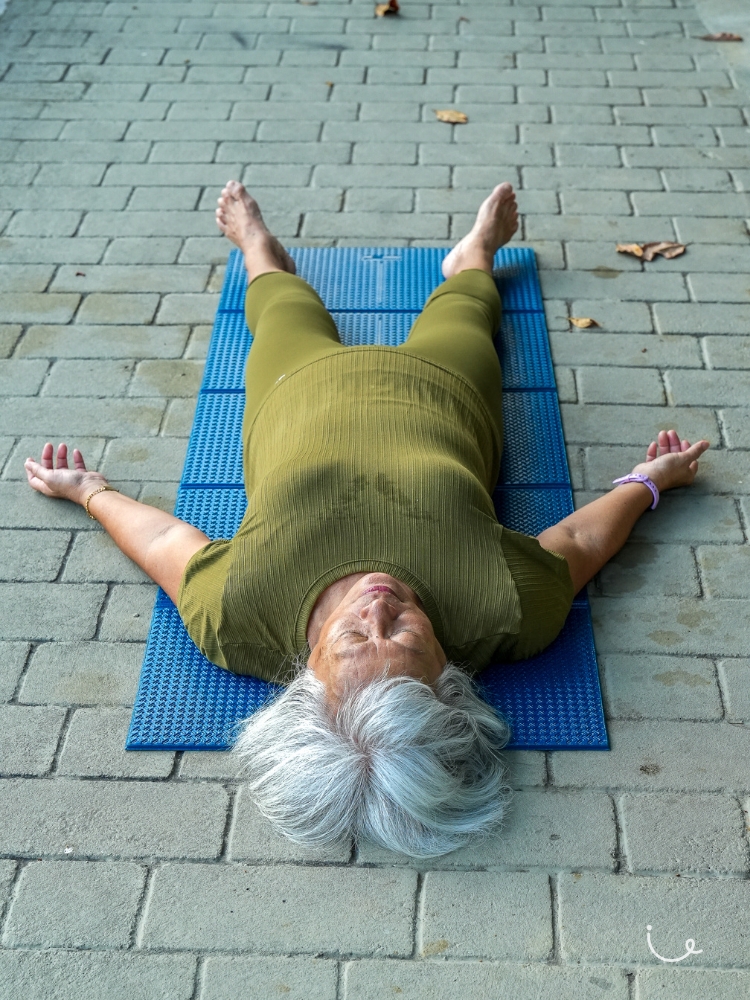
Happiness is not only your choice, but it is also your birthright.
Achieving bliss is the primary goal of yoga.
Yoga works through the body to stimulate endocrine glands, which supply hormones to the body. Proper asanas target the seven major chakras where our endocrine glands are located. They regulate the prana (internal energy) to assist in the release of hormones to keep the body in its optimum state of physical health.
Prana flows through the nadis or internal channels to activate the body’s own process of healing.
Relaxation techniques are a key component of yoga asanas. That is why anyone with any physical or mental impairment will benefit from yoga.
Holistic yoga treats the body and mind as a whole – hence the lack or weakening of one affects the other. If your mind is weighed with unhappy thoughts and notions of incapability, it can influence the way you behave in your social and work life, and ultimately cause your body and mind to be in a state of dis-ease, thus leading to physical or mental illness.
So, if you want to change your life, change your thinking.
This is a choice you can make. Yoga provides various tools to help this happen.
Advertisement
How the autonomic body works
As the name suggests, the autonomic body can function without your assistance – eyes can see, lungs can breathe, food can be digested, etc. This means that there is a certain level of intelligence within the body, like a biological AI.
The sympathetic nervous system is a kind of security guard of the body. It prepares the body to respond when it thinks the body is in some kind of danger.
In ancient times, when a man had to hunt for food, he may have to fight a lion or tiger. His body sends a surge of energy for him to fight the animal or run away from it. His body and mind are on red alert, he is in fear. His heart is beating fast, his breath comes out in spurts, his muscles are tense. This is called the fight-or-flight syndrome.
On the other hand, once the danger is over, the parasympathetic system will take over and will release the pent-up energy and restore calmness to the body and mind. So, the man can relax and his breathing will return to normal.
However, this transition is not always smooth or immediate. So, the man can still feel his adrenaline pumping and he is still waiting to react to danger. Yoga asanas and breathing exercises trigger the parasympathetic process to kick in for efficient recovery.
Though we no longer have a physical beast to fight with, our fight-or-flight mode is still in operation. Muscles get tense, breathing is laboured. The body and thus the mind become stressed.
In modern times, the fight-or-flight response can be activated by external pressure from people, relationships, work, financial challenges, illness, grief, and even violent movies or video games. These can create negative thoughts of anxiety, depression, inadequacy, etc.
All these morph into fear – fear of failure, fear of being alone, fear of rejection and so on. Some of these fears may be real, but some have no real basis and are created by the mind and can develop into monstrous proportions.
This can lead to mental illness.
Role of yoga in mental health
Regular practice of yoga can eradicate some physical and mental pressures. Exercise is an important part of healing, not just for the physical body but also the mental body. It is best done outdoors, in nature. But if you’re incapacitated and can’t go outdoors, put on a YouTube programme showing beautiful scenery.
Movement is crucial in getting rid of the excessive pent-up energy, giving the muscles and internal organs time to relax and recover from the onslaughts of daily activity and stresses.
Exercise will trigger the hormone endorphin to be released into the body, reducing pain and stress and thus improving the individual sense of being. This translates in the mind as a feeling of wellness and joy. That is why endorphin has been called the happy hormone.
Yoga postulates the idea that when the body and mind are at ease, it can get into an intuitive level of self-knowledge.
Usually, the mind of a person dealing with mental health issues is continually creating mental noise. This is usually incessant internal mental talk that makes the individual feel inadequate: you are stupid, you’re ugly, you’re useless, etc. The chattering mind erodes the individual’s sense of worth and control over his life and circumstances.
The yogic techniques employed can lessen this mental cacophony and create space between the thoughts. When the individual can reach this space of all-knowing, he can witness his thoughts and realise that he is not actually his thoughts.
Therefore, he need not be subjugated by them. So, he can form more positive thoughts at will and thus with continual practice, can change his view of himself. This is a process of mental healing.
- Tongue-curling technique (sitali parnayama)

Pranayama means an extension of the breath. This particular technique is also known as the Cooling Breath to lower body temperature and reduce stress. It’s great as an immediate remedy when faced with a stressful situation and will create calmness. The deep inhaling will bring in much-needed oxygen and positive ions to the mind as well.
As it is not elegant to display one’s tongue in public, this is best done in private. If you’re unable to be in the comfort of your own room, go to the loo and practise there.
You can sit on the floor in a comfortable easy pose or on a chair. Keep your spine fairly straight. Chin should be slightly down and not pointing upward.

Credit: Josephine Chia
- Stick your tongue out and extend your tongue as far out as you can.
- Curl your tongue.
- Inhale deeply, sucking the air through the curled tongue using it like a tube.
- Take your tongue back into the mouth. Close your mouth.
- Breathe out the air through your nostrils.
- This whole sequence makes one round. You can do four rounds or 10.
Depending on how agitated you are. You should feel the effects immediately. Allow the wave of relaxation to wash all over you. Close your eyes and sit quietly. Don’t allow that internal voice to disturb you.
Every time it starts talking, tell it to leave you alone. With more practice, you will find that the gap between two thoughts start to widen. This is the healing space you need to tap into your own higher wisdom. So, persevere.
The more relaxed you become, the more you can trigger off the hormone serotonin to be released into your body. This is the feel-good hormone. It is your gateway to happiness.
CAUTION: Since you’re taking in a lot of oxygen, stand up slowly after your practice in case you feel light-headed.
- Simplified psychic sleep (yoga nidra)

All the postures mentioned in the previous articles like the Cat and the Eagle can free the body of tension. Movement clears blocked energy. Those who suffer from mental agitation or illness often tend to suffer from poor sleep. This practice can be done before bedtime will help to relax the body and mind and offer you a good night’s sleep.
You can do this on your bed, but preferably without a pillow if you can manage it. If this strains your neck, use a cushion or pillow. Or lie on the floor on a mat. Chin is slightly tucked in.
- Lie on your back in the Corpse pose (shavasana).
- Legs should be open and feet should fall open sideways. This will allow the hips to open and relax. Arms are held loosely and away from the body, palms facing upwards.
- Relax the shoulder so that the chest is open. Close your eyes.
- Take your attention to your feet. Inhale. Tense your feet then as you exhale, release the tension. Then mentally say, I relax my feet. I relax my feet. My feet are relaxed.
- Move progressively up your legs and mentally repeat the tension and release technique. Then say that to the part of the body you’re working on: I relax my legs, I relax my legs. My legs are relaxed. Then come the hips. Torso. Neck. Shoulders. Arms. Hands. Head. Work progressively until all the parts of your body are relaxed.
- Allow the body to relax into your mat or mattress.
- If you like, think of a positive resolution or intention you would like to achieve and phrase it in the present tense as if it has already happened, like: I am happy. I am healthy. Use only one. Take your attention to the space between your eyebrows. Place this resolution or intention there.
- Rest quietly. Allow yourself to drift off to sleep.

Preferably, do this for 40 days straight without a break. 40 seems to be a magic number in inner work. If you wish to get up, turn on your side and rise safely.
Realise that you have the capacity within you for happiness. When you find yourself, you will find that joy.




